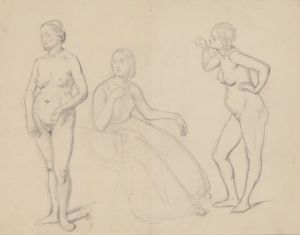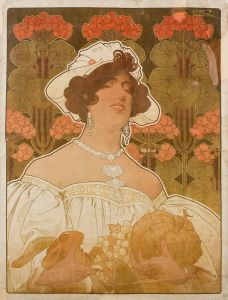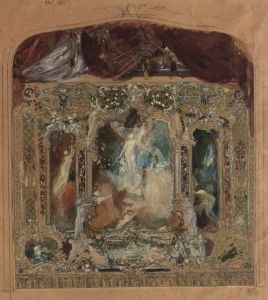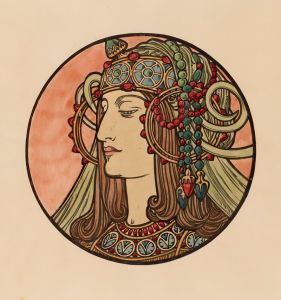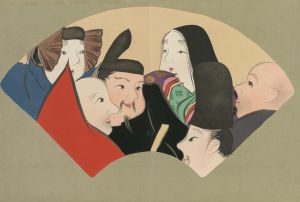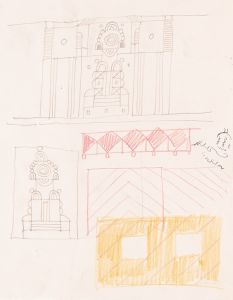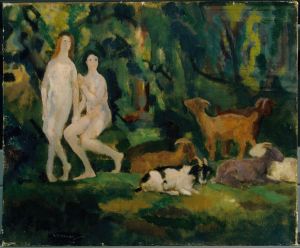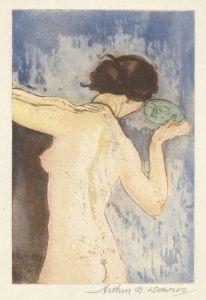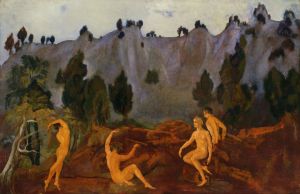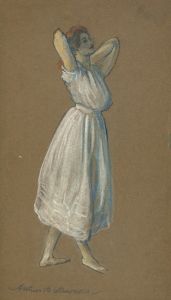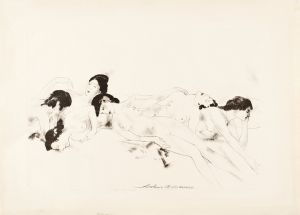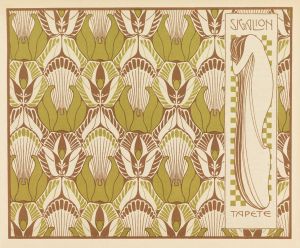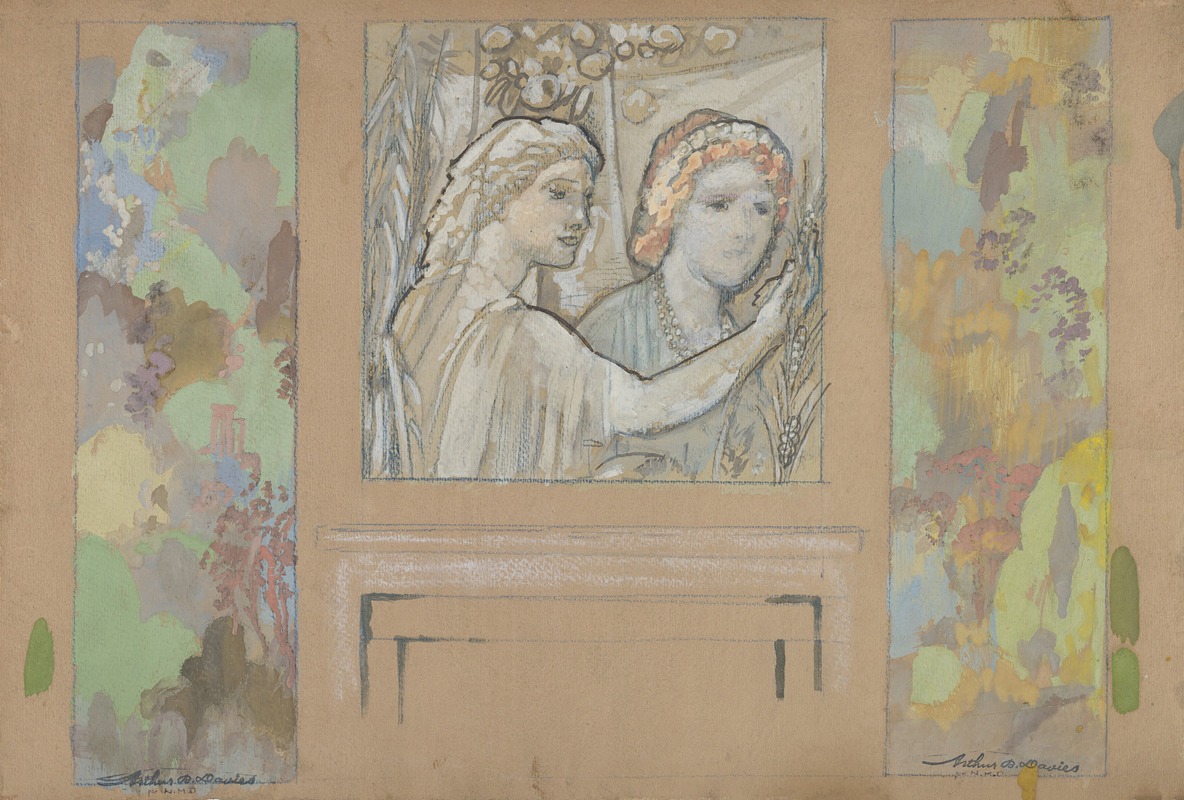
Design for an Overdoor Painting and Two Wall Panels
A hand-painted replica of Arthur Bowen Davies’s masterpiece Design for an Overdoor Painting and Two Wall Panels, meticulously crafted by professional artists to capture the true essence of the original. Each piece is created with museum-quality canvas and rare mineral pigments, carefully painted by experienced artists with delicate brushstrokes and rich, layered colors to perfectly recreate the texture of the original artwork. Unlike machine-printed reproductions, this hand-painted version brings the painting to life, infused with the artist’s emotions and skill in every stroke. Whether for personal collection or home decoration, it instantly elevates the artistic atmosphere of any space.
Arthur Bowen Davies was an American artist associated with the Ashcan School and a key figure in the development of early 20th-century American art. He was known for his ethereal and dreamlike paintings, often depicting allegorical subjects and scenes of idyllic beauty. One of his lesser-known works is "Design for an Overdoor Painting and Two Wall Panels," which exemplifies his unique style and artistic vision.
Arthur Bowen Davies was born on September 26, 1862, in Utica, New York. He studied at the Art Institute of Chicago and the Art Students League of New York, where he developed his skills and began to form his distinctive artistic voice. Davies was deeply influenced by Symbolism and the works of European artists such as Pierre Puvis de Chavannes and Odilon Redon. These influences are evident in his use of soft colors, fluid forms, and a focus on the mystical and the ideal.
"Design for an Overdoor Painting and Two Wall Panels" reflects Davies' interest in creating art that transcends the ordinary and enters the realm of the poetic and the fantastical. While specific details about this particular work are scarce, it is consistent with his broader oeuvre, which often includes mythological themes and serene landscapes. His work frequently features figures in harmonious compositions, suggesting a world of tranquility and introspection.
Davies was a central figure in organizing the 1913 Armory Show, which was pivotal in introducing modern European art to the American public. This exhibition showcased works by artists such as Marcel Duchamp and Henri Matisse, challenging the traditional norms of American art and paving the way for new artistic movements. Although Davies' own work was more conservative compared to the avant-garde pieces displayed at the Armory Show, his role in the event demonstrated his commitment to expanding the horizons of American art.
Throughout his career, Davies maintained a balance between his commercial success and his artistic ideals. He was a member of "The Eight," a group of artists who sought to break away from the academic constraints of the National Academy of Design. This group, which included artists like Robert Henri and John Sloan, was instrumental in the development of the Ashcan School, known for its realistic and unvarnished depictions of urban life. However, Davies' work remained distinct from the gritty realism of his contemporaries, as he continued to explore more lyrical and imaginative themes.
"Design for an Overdoor Painting and Two Wall Panels" can be seen as part of Davies' broader exploration of decorative art. His interest in creating art that could be integrated into architectural spaces reflects a desire to merge art with everyday life, making beauty an accessible and integral part of the environment. This approach aligns with the Arts and Crafts movement, which emphasized craftsmanship and the aesthetic potential of functional objects.
Arthur Bowen Davies passed away on October 24, 1928, in Florence, Italy. His legacy is marked by his contributions to American art, both through his own work and his efforts to promote modern art in the United States. While "Design for an Overdoor Painting and Two Wall Panels" may not be as widely recognized as some of his other works, it remains a testament to his artistic vision and his ability to create works that inspire contemplation and wonder.





